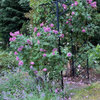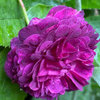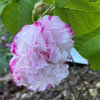cross-posting: Anyone up for Experimental Organics?
serenasyh
14 years ago
Featured Answer
Sort by:Oldest
Comments (23)
Kimmsr
14 years agolast modified: 9 years agoserenasyh
14 years agolast modified: 9 years agoRelated Professionals
Redondo Beach Landscape Architects & Landscape Designers · Paradise Landscape Architects & Landscape Designers · Edmond Landscape Contractors · Columbine Landscape Contractors · Commack Landscape Contractors · Deerfield Beach Landscape Contractors · El Reno Landscape Contractors · Mission Bend Landscape Contractors · New Cassel Landscape Contractors · Seminole Landscape Contractors · Shirley Landscape Contractors · Washington Landscape Contractors · Wilsonville Landscape Contractors · York Landscape Contractors · Winter Gardens Landscape Contractorsserenasyh
14 years agolast modified: 9 years agojim1961 / Central Pennsylvania / Zone 6
14 years agolast modified: 9 years agojim1961 / Central Pennsylvania / Zone 6
14 years agolast modified: 9 years agojim1961 / Central Pennsylvania / Zone 6
14 years agolast modified: 9 years agoKimmsr
14 years agolast modified: 9 years agosergeantcuff
14 years agolast modified: 9 years agojim1961 / Central Pennsylvania / Zone 6
14 years agolast modified: 9 years agojim1961 / Central Pennsylvania / Zone 6
14 years agolast modified: 9 years agorhizo_1 (North AL) zone 7
14 years agolast modified: 9 years agoanntn6b
14 years agolast modified: 9 years agorhizo_1 (North AL) zone 7
14 years agolast modified: 9 years agosergeantcuff
14 years agolast modified: 9 years agoserenasyh
14 years agolast modified: 9 years agorob_r
14 years agolast modified: 9 years agoserenasyh
14 years agolast modified: 9 years agomrlike2u
14 years agolast modified: 9 years agomrlike2u
14 years agolast modified: 9 years agoserenasyh
14 years agolast modified: 9 years agomrlike2u
14 years agolast modified: 9 years agorhizo_1 (North AL) zone 7
13 years agolast modified: 9 years ago
Related Stories

HOME OFFICESThe Cure for Houzz Envy: Home Office Touches Anyone Can Do
Borrow these modest design moves to make your workspace more inviting, organized and personal
Full Story
BUDGET DECORATINGThe Cure for Houzz Envy: Living Room Touches Anyone Can Do
Spiff up your living room with very little effort or expense, using ideas borrowed from covetable ones
Full Story
MUDROOMSThe Cure for Houzz Envy: Mudroom Touches Anyone Can Do
Make a utilitarian mudroom snazzier and better organized with these cheap and easy ideas
Full Story
KITCHEN DESIGN6 Clever Kitchen Storage Ideas Anyone Can Use
No pantry, small kitchen, cabinet shortage ... whatever your storage or organizing dilemma, one of these ideas can help
Full Story
CLOSETSThe Cure for Houzz Envy: Closet Touches Anyone Can Do
These easy and inexpensive moves for more space and better organization are right in fashion
Full Story
COMMUNITYCommunity Building Just About Anyone Can Do
Strengthen neighborhoods and pride of place by setting up more public spaces — even small, temporary ones can make a big difference
Full Story
LAUNDRY ROOMSThe Cure for Houzz Envy: Laundry Room Touches Anyone Can Do
Make fluffing and folding more enjoyable by borrowing these ideas from beautifully designed laundry rooms
Full Story
BUDGET DECORATINGThe Cure for Houzz Envy: Entryway Touches Anyone Can Do
Make a smashing first impression with just one or two affordable design moves
Full Story
BATHROOM DESIGNThe Cure for Houzz Envy: Bathroom Touches Anyone Can Do
Take your bath from blah to ‘ahhhh’ with just a few easy and inexpensive moves
Full Story
BOOKSCan Tidying Up Result in Life-Changing Magic?
Organizing phenom Marie Kondo promises big results — if you embrace enormous changes and tough choices
Full StoryMore Discussions











savinia